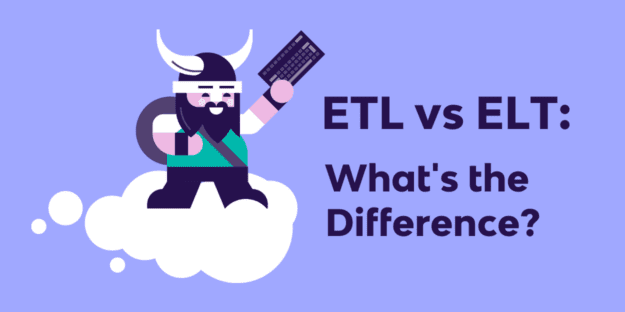Data replication is a critical component of any ELT platform.
Whether performing data updates, or full cloud migrations, data replication determines how data is synced between your database and your cloud data warehouse. This is a key capability for teams to consider as they search for an ELT platform.
In our latest eBook – The Ultimate ELT Buyer’s Guide – we outline everything teams need to know about data replication for ELT platforms. Read this excerpt to learn what to keep an eye out for.
Batch & Stream Processing: Two Core Data Replication Methods
With ELT platforms, there are typically two possible methods for data replication: batch processing and stream processing. Here’s a quick reminder of what the two terms mean:
- Batch processing collects data in batches, and feeds these batches into a database during predefined time intervals. Batch processing is ideal for very large data sets and deeper data analysis.
- Stream processing feeds data into a database as soon as it is generated. Stream processing is ideal for projects that require speed, nimbleness, and real-time decision making.
ELT Features: Data Replication
While each data replication method offers its own pros and cons, a versatile ELT solution allows teams to choose between them.
This ensures that teams can calibrate for each specific use case. These are some key features to keep an eye out for while searching for an ELT platform:
- Change Data Capture (CDC) – Change data capture uses stream processing to instantly sync a source dataset with a target dataset. CDC updates data points incrementally, as soon as changes happen. CDC can sync a source database with a cloud data warehouse in real time.
- Standard Extraction – Standard extraction differs from CDC in two important ways. First, the method uses batch processing. And second, entire database tables are updated, rather than individual data points.
- Multi-Tables – Multi-tables automates batch migrations. The feature automatically migrates relational databases to a cloud data warehouse. This streamlines an otherwise cumbersome batch migration process.
While every team has unique needs, most will encounter use cases that demand different forms of data replication. With access to both batch and stream processing, teams can use the method that works best for each individual project.
Download the eBook
Data replication is an essential part of any ELT platform. But data replication is just one capability that teams need to look for in an ELT platform. In order to choose the right solution, teams must consider all the different features ELT platforms have to offer.
That’s why we produced the Ultimate ELT Buyer’s Guide. We want buyers to understand all the must-have features, side-by-side, so they can identify the best ELT platform for their specific needs.
Minimize the firefighting. Maximize ROI on pipelines.





